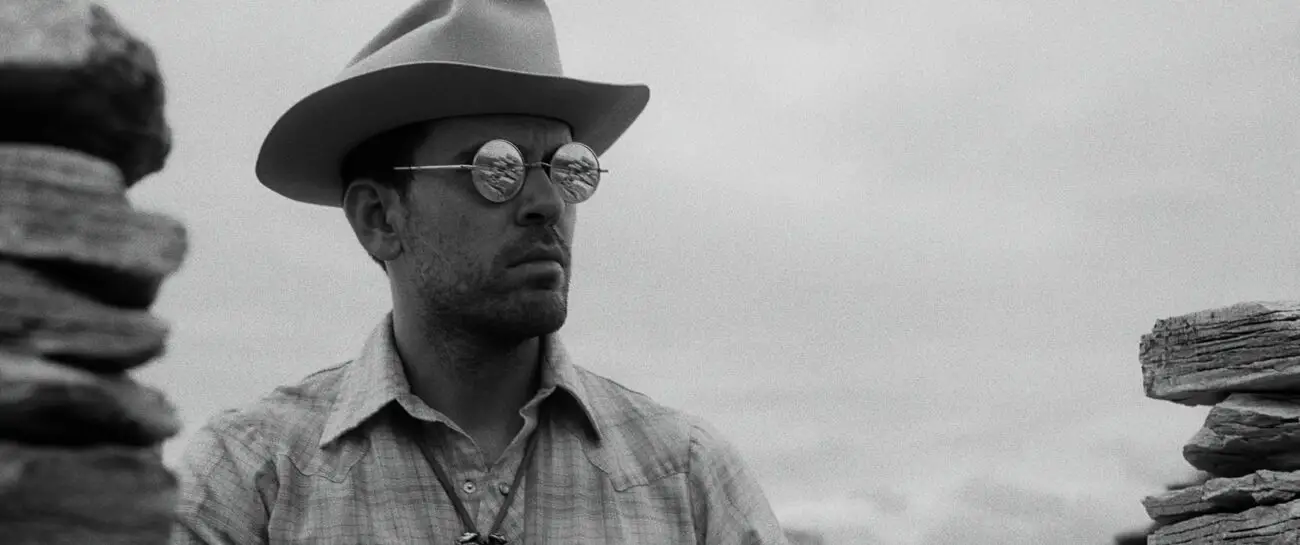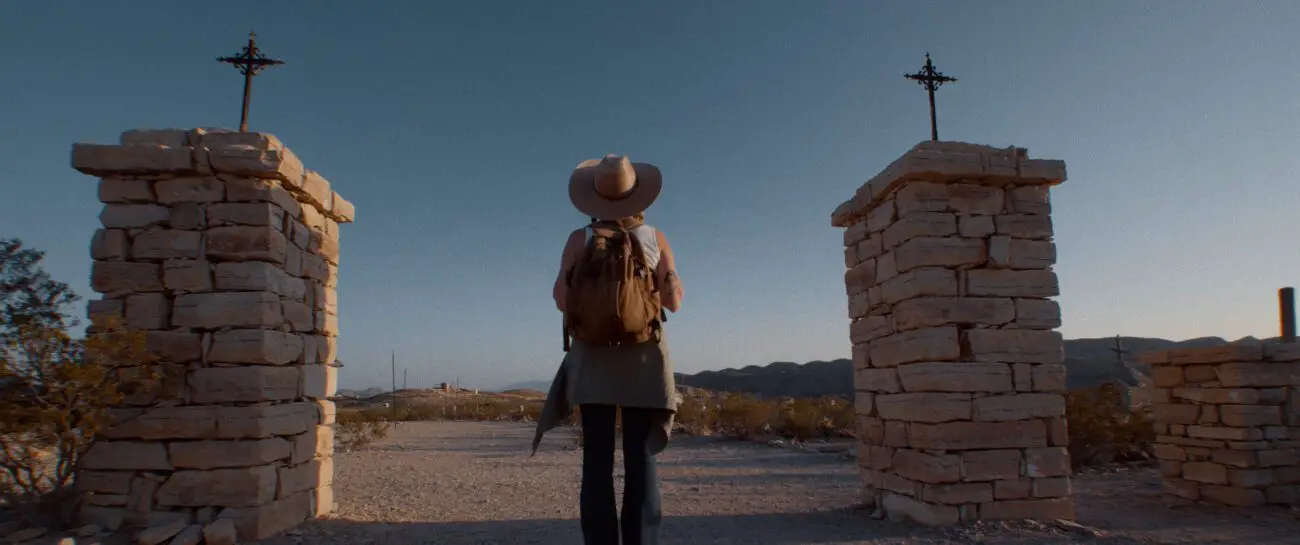The first eight minutes of The Ghost Lights are a close-up of Alex (Katreeva Phillips) in the back of a taxi. She’s got headphones in, relaxing and listening to music. Her sense of peace is interrupted by a phone call from her boss (Ryan Bijan) about a magazine story that’s past due. As she’s in the middle of begging for an extension, another call comes in. This time, it’s her sister, Liz (Madison Calhoun). The audience quickly realizes that Alex isn’t in this taxi for a fun vacation. She’s in Texas for her father’s funeral. A funeral her sister informs her was two days ago.
While Alex is cleaning out her father’s house, she comes across an old tape recorder and a collection of tapes. Soon, Alex finds herself wrapped up in an otherworldly mystery about the ghost lights of West Texas. The longer Alex listens to the tape, the more she realizes it’s not a simple story of lights in the sky. She finds herself in the midst of strange disappearances, large conspiracies, and, most importantly, with a story to write to get her boss off her back.

The film is told in two parts. There’s the present-day storyline of Alex listening to the tapes, and the flashbacks to her young father (John Francis McCullagh) making these recordings with Mario (Billy Blair), a man who saw the ghost lights. The flashbacks are in black and white and supplemented with gorgeous photographs of the barren landscape of West Texas. It’s difficult for anyone who hasn’t been there to understand how empty that massive expanse of land is. It’s not the simple emptiness of a lonely city block or a deserted park. That land is beyond comprehension, but the stunning photography that accompanies the stories of the ghost lights makes it possible to begin to understand the sheer loneliness of the West Texas desert.
In many ways, there was no other possible location for The Ghost Lights to take place. The sheer scope of Texas’ vacant land makes it a perfect breeding ground for ghost stories and mysterious disappearances. Emptiness like that effortlessly creates uneasiness and the potential for the paranormal to occur. It’s far more frightening to be alone in the middle of nowhere than to be surrounded by people, especially when nature acts strangely and without explanation. Much of the plot is storytelling exposition, and some may believe the story would be better suited to a podcast or an audio-only format, but the visuals of the Texas landscape are completely necessary. To take away the ability to see the scope of the setting is to lose an essential part of the story.
For those who live in a big city where there’s always an ambient glow from the surrounding lights, it may be difficult to understand how easy it is to be afraid of the sky. It’s easier to believe in mysteries in places like West Texas. It’s unknown whether that’s because more strange things happen out there or because fewer people are around to witness an event, but The Ghost Lights is proof of our willingness to embrace what we cannot explain.

Most importantly, The Ghost Lights is a good ghost story. It’s the kind that should be told around a campfire or at a sleepover. The sort of tale that has the audience on the edge of their seats, trying to rationalize the inexplicable or willing to wholeheartedly believe in the otherworldliness of it all. This success is thanks in part to writer/director Timothy Stevens’ script, but also to Blair’s performance as Mario. Alex’s dad is the one asking the questions on the tapes, but it’s Mario who is telling of his first-person experience with the ghost lights. Blair’s voice is gravelly, making him sound like he belongs in the Westerns of yesteryear. His phrasing, cadence, and overall performance effortlessly build suspense. The reveal of a major twist at the end of the second tape is delivered like a gut punch from Blair. It’s the moment Alex chooses to stay in Texas to investigate, and the moment the audience fully realizes what’s at stake.
If you’re looking for something more along the lines of popcorn horror jumpscares, The Ghost Lights is not going to fulfill those desires. Instead, it’s a slow-burn fable about families, regrets, and the mysteries of the universe. There’s the lingering Man in Black (Stevens) who shadows Alex wherever she goes, but The Ghost Lights is much more interested in creating a dread that’s deeper than a worry about what’s around the next corner.
In the best way, The Ghost Lights feels like an episode of The Twilight Zone. Rod Serling would feel right at home with the music, the black-and-white images, and the eerie script. One almost expects him to appear at the end of the film as the credits roll. The Ghost Lights is an excellent, pared-down tall tale that’s sure to please even the nonbelievers.



